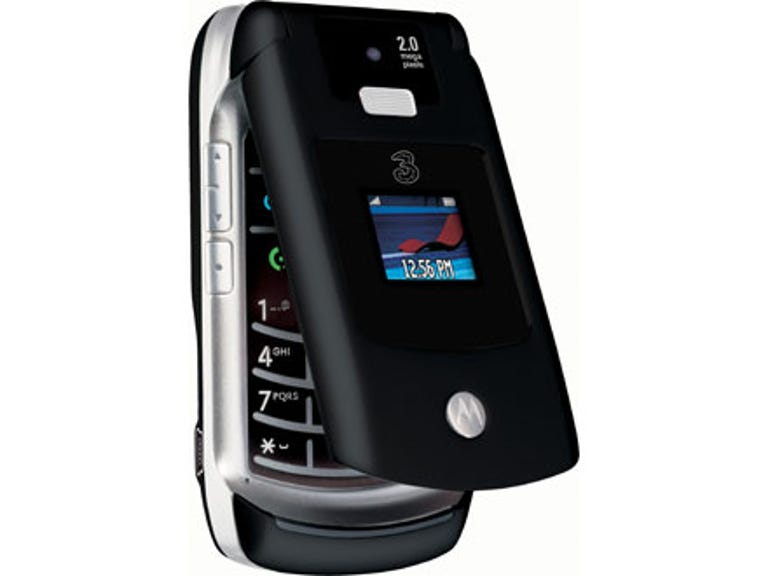 Why You Can Trust CNET
Why You Can Trust CNET Motorola RAZR V3x review: Motorola RAZR V3x
Based on the design of the Motorola RAZR V3, the slightly thicker V3x is a 3G-enabled handset with a 2-megapixel camera, Bluetooth and an MP3 player.
Design
Despite its name and heritage, the RAZR V3x isn't a slither of metal so thin you could cut yourself on it and as a 3G phone at 20mm it is slightly bulkier than its older 2G cousin, the RAZR V3. It's made from a different soft plastic material than its relative too. Sturdy is too strong a word, but the clamshell handset certainly sits firmly and squarely in the palm of your hand. For the clumsy amongst us, the phone looks like it could take the odd knock and come back fighting. The handset has an external screen that is capable of 65K colours and a resolution of 96 x 80 pixels.
The Good
The Bad
The Bottom Line
The phone is lanky at 180mm tall when fully out-stretched, but we personally like the sense of space and the large, 2.2-inch TFT LCD screen. On the right side of the phone you'll find the small camera launcher button and the voice dialing button, which enables you to dial people in the phone book by speaking their name or number, and also listen to voicemail. You can also launch the camera using your voice ("lights camera action!"). The left side of the phone has a button to launch the camera in video shooting mode and a volume/ring tone control.
Features
The RAZR V3x comes with a dual-ear stereo headset which performs well, a mini USB port for your connectivity requirements and wireless stereo options that enable a compatible Bluetooth audio device, supporting the Advanced Audio Distribution Profile (A2DP), to work with the on-board multimedia player (this supports MP3, AAC+, WMV, WMA and Real video/audio files).
64MB of memory is built in and there is a slot under the battery for microSD (TransFlash) card -- adding up to 512MB of storage. The microSD is the same kind of media format used for previous Motorola 3G models (A100, C975, E1000) and is plenty for most users.
Motorola, not traditionally applauded in the camera phone category, has placed a 2-megapixel camera in the V3x with options for 1.2-megapixel, 640x480 and 320x240 resolutions. The camera offers standard features such as lighting settings and timer shootings and perhaps best of all a macro and landscape manual switch for close up and distance shots.
SMS/EMS/MMS, e-mail and instant messaging are all included, as well as MIDI-based polyphonic and digital music tones support. In the connectivity basket, the phone is equipped with high speed GPRS (2.5G) and W-CDMA (3G) network data connectivity and there is a built-in WAP browser.
Performance
Making voice and video calls was seamless, and the camera performed as well as we'd expect on a mobile phone. Self portraits can be taken with the clamshell closed, by simply holding down the camera button and allowing the outer sub-display to act as a virtual mirror. The integrated light works as a flash at a distance of two metres, but I found taking shots at night a bit of a waste of time.
Overall, we found the user interface a tad troublesome. For those familiar only with Nokia phones, there seemed to be a lot of sub menus and searching for options was a chore without logic or fluidity in some cases. Without the help of the large, user friendly keypad, we think we might have shut the shell and given up a lot sooner.
It might be another Nokia-bias but as proficient, Olympic-standard text messengers, we found the iTAP predictive text a bit of a hurdle. It supports word completion but we switched to manual text entry after several minutes of trying to type as quickly as we would on the T9 (text on nine keys) system that Nokia supports.
The 880mAh battery life was average and might prove troublesome to heavy Bluetooth users or people who utlilise the phones other energy-demanding features. We found it next to impossible to draw longer than two or three days from a single charge.
WAP-browsing was quick enough, with the odd faltering load, but all media streaming and playback requests are handled by the built-in media applications and performed well.
